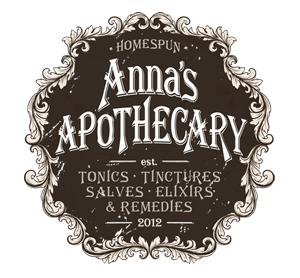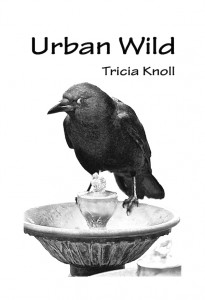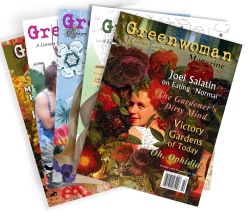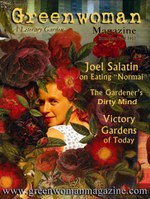
This is my mini-bio about one of our world’s most fascinating scientists. I wrote it a few years ago and it first appeared in Greenwoman Volume 1. Imagine my surprise and delight today to realize that it’s Dr. Bose’s birthday! I planned to post this some time ago, it got pushed back, and now it’s the perfect time to share. ENJOY!
—Sandra Knauf
* * *
May 10, 1901. The setting is a grand lecture hall in the Royal Society of London. An audience of scientists and scholars is awash in murmurs over what they’ve just seen.
Sitting on the lecture table are unusual metal instruments. They include something called a crescograph, a mechanical recording device created by the visiting scientist. This device is said by journalist F. Yeats-Brown, who is there reporting for The Spectator, to magnify “so inconceivably that the pace of a snail would become eight times faster than a bullet.” Nearby is a potted mimosa plant under artificial lights.
Yeats-Brown takes notes on what will be cabled as a “modern miracle of science.” The world will be “startled” to learn that Sir Jagadish Chandra Bose, the Indian biologist, has demonstrated in the presence of this learned audience that a plant has a “heart,” which acts physiologically very much as a heart does in the animal kingdom.
The scientist Sir Jagadish described the mimosa earlier in his lecture saying, “This poor little plant is rather depressed, and no wonder. But it’s alive in spite of your climate, and so I shall be able to show you its nerve impulses and its reactions to various drugs.”
The audience watches as Sir Jagadish takes a pair of scissors and cuts a branch from the mimosa. He inserts it into his recording machine. A needle pierces the branch’s skin.
The audience watches the plant’s pulsations, like heart-beats, magnified a “million fold,” on a wall projection.
Sir Jagadish explains, “The pulse will grow fainter and fainter, of course, as it bleeds to death.”
The audience watches this occur, just as he predicted.
“Of course!” writes Yeats-Brown, as the audience stares at the spot of light that illustrates the “death-struggle” of the plant.
Earlier, the audience had witnessed Sir Jagadish as he administered a little bromide into the plant, which almost caused its death. Then he injected an extract of thyroid, which made for “skittish” readings, then, finally, the cobra venom, which produced a stimulus, then the death-pang.
The implications of Bose’s discoveries? In the words of Yeats-Brown: “Carrots can get drunk and write the scrawling story of their dissipation. Plants tell Sir Jagadis [sic] how they feel when he shocks them with a loud noise; fat ones feel it less than their more slender and sensitive sisters.”
An amazing revelation: Plants feel and react very much like we do.
Sir Jagadish Chandra Bose is best known as one of the founding fathers of radio science. His demonstration of remote wireless signaling predated Marconi’s and he was a pioneer in the investigation of radio waves. His discoveries and inventions were many, including the design of an instrument in 1897 which generated very short electrical waves (measured in millimeters) when others were struggling with Hertzian electric waves that were about three meters long. Bose was also the first to use a semi-conducting crystal to detect radio waves, and he invented various microwave components that are in common use today.
Bose was what is known as a polymath (someone with knowledge of many subjects). Aside from being one of the fathers of radio science, he was a physicist, biologist, botanist, archaeologist, and the father of Bengali science fiction. But what may be most fascinating to those of us with an interest in botany is Bose’s discoveries about plant life. He was the first to proclaim, “We are all interconnected.”
Bose was born on the 30th of November, 1858, in Rarikhal, Bengal, India. His father was a civil servant who rebelled against the standard children’s education of that time for someone of his rank in society—he chose not to send his children to an English school for their early education, which was expected. Instead, he insisted his children learn first among their own people. In a vernacular school, young Jagadish studied his native language and culture among the children of those “who tilled the ground and made the land blossom with green verdure and ripening corn, and the sons of the fisher folk.” From his country’s literature he became familiar with the great epics, and from his fellow students he drew his love of nature. This early experience would forge a strong bond to his culture and Bose would remain connected to his people.
Bose’s education continued in Xavier’s Collegiate School in Calcutta, the Calcutta University, and finally at Christ’s College in Cambridge, England. He earned two science degrees. He also earned a Bachelor of Science degree from the University of London in 1884. In 1885, he became an officiating Professor of Physical Science at the Presidency College in Calcutta. There, being an Indian, and an officiating Professor, he was allowed to only draw one-third of his pay grade. In protest, Bose refused to accept any salary for three years. After those three years he was appointed to Professor, and received a pay increase of double his prior salary (which was still only two-thirds the pay of European professors) and the three years back pay. He would not receive an equal wage for 18 more years.
This, however, was only one of many challenges he would face. Unlike his American and European counterparts, Professor Bose did not have an appropriate laboratory in which to work. His facilities consisted of a 24-square foot room and he received only the help of one untrained tinsmith to assist in constructing research equipment. Research was conducted on his own time and with his own money. Nevertheless, within a decade Bose emerged as a pioneer in the developing research field of wireless waves.

J. C. Bose demonstrating wireless signaling in Calcutta, by The Birth Centenary Committee, printed by P.C. Ray, via Wikimedia Commons
In recognition of his many contributions during this decade, the University of London conferred on him the Degree of Doctor of Science, and, in 1896, the Cambridge University awarded him the degree of M.A. The Royal Institution of Great Britain invited him to deliver a ‘Friday Evening Discourse’ on his work, which was considered a privilege and the highest distinction that could be bestowed on a man of science.
Bose met Guglielmo Marconi in 1896, at least a year before Marconi conducted his wireless signaling experiment on Salisbury Plain, and a year after Bose conducted his public demonstrating of remote wireless signaling in Kolkata (Calcutta). Later, in an interview, Bose expressed disinterest in commercial telegraphy and made it known that others were welcome to use his research work. In 1904 he was the first from the Indian subcontinent to get a U. S. patent, for his invention of a certain crystal receiver which proved to be the most sensitive detector of the wireless signal. There were no secrets as to the construction of his inventions and he did not use the patents granted to him for personal gain. He declared that his work was, “open to all the world to adopt for practical and money-making purpose.” He was quoted in the Calcutta magazine Modern Review saying, “The spirit of our national culture demands that we should forever be free from the desecration of utilizing knowledge for personal gain.”
According to another article in Modern Review it was during this time, while he researching radio waves and materials used for receivers, that Bose became interested in the response of other materials, namely metals and plants. “[Bose] found that the uncertainty of the early type of his receiver was brought on by ‘fatigue’ and that the curve of fatigue of his [metal] instrument closely resembled the fatigue curve of animal muscle.” This spurred him to further experiments and he soon saw that the fatigue of his instrument was removed by suitable stimulants. In addition, he found that application of certain poisons permanently eradicated the instrument’s sensitiveness. He was amazed at this discovery—this parallelism in the behavior of the ‘receiver’ material to the living muscle tissue of animals. This led him to a systematic study of all matter, organic and inorganic, living and non-living.
Universal Response
Dr. Bose began to research how metals reacted to stimulus in a full range of experiments: mechanical, thermal, chemical and electrical. He found that each stimulus produced a measurable electric response. This led him to try the same stimulus in plants and animal tissues, and he found, again, the same results. All materials—metals, plant tissues, and animal tissues, were affected in the same ways. In his book, Response in the Living and Non-Living, Bose wrote that they were “benumbed by cold, intoxicated by alcohol, fatigued by excessive work, stupefied by anesthetics, excited by electric currents, stung by physical blows and killed by poison—they all exhibit essentially the same phenomena of fatigue and depression, together with possibilities of recovery and exaltation, yet also that of permanent irresponsiveness which is associated with death—they are all responsive or irresponsive under the same conditions and in the same manner.” This finding is what Dr. Bose termed “universal response.”
Dr. Bose wrote a paper on his findings in 1900, and on June 5, 1901 he presented a demonstration to the Royal Society “On Electric Response of Inorganic Substances.” Immediately, he was met with objections and strong criticism, particularly from Sir John Burden Sanderson (the leading physiologist) and his followers, who attacked him on the belief that a physicist should not be straying into the work of physiologists. Bose’s paper was not published but placed in the archives. A Modern Review article revealed how another paper, published in another journal by another Society, eight months later, was found to be a plagiarism of Dr. Bose’s work and led to “much unpleasantness.” The article also stated that “the determined hostility and misrepresentation of one man succeeded for more than 10 years to bar all avenues of publications for his [Bose’s] discoveries.”
The end result of all this would be that Dr. Bose would work for the next decade to prove his research was valid.
In March 1902, he performed a series of experiments before the Linnean Society showing electric response in plants when subjected to fatigue, temperature changes, poisons and anesthetics. Again, the responses were identical with those seen in animal muscle and nerve tissue. In June 1902 he wrote a paper, “On the Electric Response in Animal, Vegetable, and Metal.”
While Dr. Bose used the Mimosa pudica plant (now known as “sensitivity plant”) for his experiments to most easily demonstrate his findings, he made it clear in his book On Electric Response of Ordinary Plants Under Mechanical Stimulus that “all plants are sensitive.” He went on to demonstrate that not only every plant, but every part of every plant exhibited an electric response to stimulus. “. . . all plants, even the trees,” he was quoted in Modern Review, “are fully alive to changes of environment; they respond visibly to all stimuli, even to the slight fluctuations of light by a drifting cloud.”

‘Tropic’ Movements,” Ascent of Sap” and “Growth”
Bose found that plants gave not only electric responses to stimulus but response through movement (also called tropic or motive response) which could be measured. These movements, however, were extremely diverse. Light, for example, sometimes induced a positive curvature in plant tissue, sometimes a negative one. Gravitation induced one movement in the root, and the opposition in the shoot. Other movements, not outwardly visible, could also be measured. Growth and the ascent of sap, for example, were shown to be reactions to outward stimulus. This may now seem simplistic, especially to gardeners who are used to thinking in these terms, but viewing plants as connected and perceptive life forms, and researching this through scientific means was unusual at that time. Bose invented a machine called the “shoshungraph” that measured the ascent of sap and a “growth recorder” or “balanced crescograph” that determined the influences of various agencies on growth. The instruments were so finely created that they could measure, within a few seconds, real growth, and in less than fifteen minutes the response of a plant to a fertilizer, food, poison, electrical current, or other stimulants.
(Stay tuned for Part II next week!)
—Sandra Knauf
* * *
Sandra Knauf is the one-woman-show behind Greenwoman Publishing. Her books include the six-volume series Greenwoman, (a literary digest), her young adult fantasy novel, Zera and the Green Man, and an anthology of sexy gardening stories that she says is the feminist gardener answer to Fifty Shades of Grey—Fifty Shades of Green. She was a 2008-09 featured “Colorado Voices” columnist for The Denver Post and her humorous essays have appeared nationally in GreenPrints and MaryJanesFarm. Sandra lives in Colorado Springs, Colorado with her family, dogs, huge urban garden, and lots of books.























